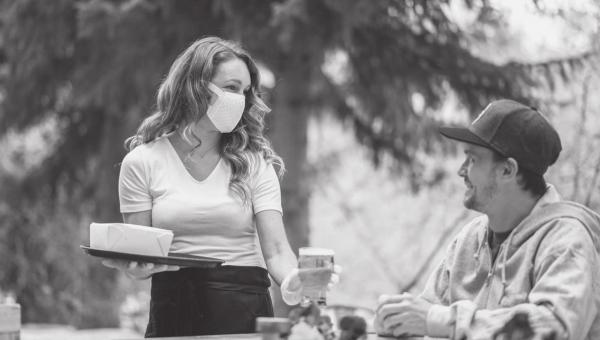The nasty, germy lives of humans
Human beings are downright filthy in their habits. That’s one of the surprising lessons from the current pandemic…and, it’s not just you or that other guy. It’s everybody, it’s us, it’s me…which is why I’ve added a washable, cotton mask, plastic gloves and a small container of hand sanitizer and anti-bacterial wipes to my purse.
As we’re learning, the world is a grimy, germy place, with bacteria and viruses lurking in your home, your workplace, car, public places, even our parks and favorite outdoor venues.
What about picnic tables, playground equipment -- and don’t forget port-apotties? That bird poop you just knocked off the hood of your car, bare-handed, also contains the bacteria, e. coli.
I suppose I’ve been aware of the world’s nastiness since I was a very little girl, living in West Texas during the polio epidemic.
We washed our hands every time we arrived home, even from church! I thought handwashing was fun because I was given a step stool so I could reach the bathroom sink.
With the current pandemic, you've probably adopted some new cleanliness habits, such as avoiding touching public restroom door handles or hitting elevator buttons with your elbow to minimize the bacteria you’ll drag back home.
But most of the germs you encounter aren’t found in public spaces, but on surfaces and items in your own home?
According to a 2011 household germ study, there's an average of 321,629,869 microorganisms living in every gram of your used dish sponge. To effectively combat grime, replace your sponge more frequently.
Research has found, on average, 7,863 germs crawling over every 100 square centimeters of your game controller.
There can be 200 times more fecal bacteria on the average cutting board than a toilet seat—mostly from the raw meat you've been slicing.
Your cell phone can be one of the most germ-ridden things that you own. One study showed there are about 2,700 to 4,200 units of bacteria found on mobile devices.
Your purse picks up a lot of bacteria in its travels. According to one study, one in five handbag handles is home to enough bacteria to cross-contaminate other surfaces.
Kitchen sinks have 70,000 times more bacteria than what's living on your toilet handle! To prevent this, sprinkle baking soda and wipe down with a vinegarsoaked paper towel.
At home, adults touch about 30 objects within a minute and most of these objects are covered with germs. Remote controls, light switches, doorknobs, and appliance handles are just a few of the areas crawling with microscopic bacteria.
The following are some of the germiest things in public places:
Restaurant menus top the list as one of the germiest things many people touch. Restaurant menus harbor 100 times more bacteria than a toilet seat. So, never let a menu touch your silverware or plate. And wash your hands or use an antibacterial wipe after placing your order.
Condiment Dispensers in most restaurants are rarely cleaned — and many people do not wash their hands before eating. Using a Kleenex, wipe hand sanitizer on the outside of the container or use a disinfectant wipe. Using a napkin to pick them up doesn’t help. Microorganisms pass right through napkins.
Grocery carts handles may have close to 11 million microorganisms — including ones from raw meat…and many shoppers place their children with dirty diapers on the seat — the same one you’re putting your produce on. Be sure to wipe the handle and seat with a disinfectant wipe before using.
ATM machine buttons and the cash are on the list of germiest things people can touch. Use at least one disposable glove when you visit your ATM. Flu viruses can survive on a dollar bill for nearly 17 days.
Public Restrooms — The moist environment in a restroom allows bacteria to survive longer and-washing stations are covered with germs. When you wash your hands, get the soap, lather up and then, stay away from the dispenser. Also, restroom door handles are covered with germs because 95 percent of people fail to wash their hands long enough to kill harmful bacteria. In addition, the CDC says only 31 percent of men and 65 percent of women wash their hands after using the facilities.
Research found nearly 70% of lemon wedges or slices from restaurant glass rims or glasses of water had disease-causing microbes, including feces and E. coli — that could cause painful stomach problems.
Water fountains are on the list of germiest things in public places because they are rarely cleaned.
Playgrounds also are rarely cleaned. The germiest area of a playground is the sandbox. Bacteria thrive in warm, moist places. Take some hand sanitizer and wipes with you when visiting a playground.
We are all going to encounter other people’s germs in public places. So — take the necessary steps and precautions to avoid becoming infected.
To keep you and your family healthy, just do your best with proper handwashing, hand sanitizers, wipes, and wear your mask. Be sure to clean bathrooms and wipe down home surfaces regularly.
Welcome to the new normal!



